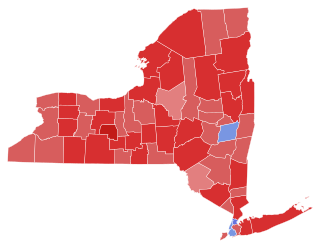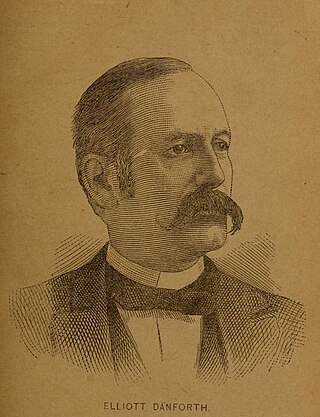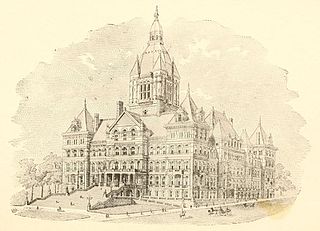
Charles Evans Hughes Sr. was an American statesman, politician, academic, and jurist who served as the 11th chief justice of the United States from 1930 to 1941. A member of the Republican Party, he previously was the 36th governor of New York (1907–1910), an associate justice of the Supreme Court (1910–1916), and 44th U.S. secretary of state (1921–1925). As the Republican nominee in the 1916 presidential election, he lost narrowly to Woodrow Wilson. Had Hughes won, he would have become the only former Supreme Court justice to be elected president.

Harlan Fiske Stone was an American attorney and jurist who served as an associate justice of the U.S. Supreme Court from 1925 to 1941 and then as the 12th chief justice of the United States from 1941 until his death in 1946. He also served as the U.S. Attorney General from 1924 to 1925 under President Calvin Coolidge, with whom he had attended Amherst College as a young man. His most famous dictum was: "Courts are not the only agency of government that must be assumed to have capacity to govern."
Maurice Albert Hutcheson was a carpenter and an American labor leader. He was president of the United Brotherhood of Carpenters and Joiners of America from 1952 to 1972.

The 1970 New York state election was held on November 3, 1970, to elect the governor, the lieutenant governor, the state comptroller, the attorney general and a U.S. Senator, as well as all members of the New York State Assembly and the New York State Senate.

The 1966 New York state election was held on November 8, 1966, to elect the governor, the lieutenant governor, the state comptroller, the attorney general and the Chief Judge of the New York Court of Appeals, as well as all members of the New York State Assembly and the New York State Senate. Besides, 15 delegates-at-large to the New York State Constitutional Convention of 1967 were elected on the state ticket, and three delegates each in the 57 senatorial districts.

The 1946 New York state election was held on November 5, 1946, to elect the governor, the lieutenant governor, the state comptroller, the attorney general, a U.S. Senator, the chief judge and an associate judge of the New York Court of Appeals, as well as all members of the New York State Assembly and the New York State Senate.

Elliot Danforth was an American lawyer and politician.
Irving Lehman was an American lawyer and politician from New York. He was Chief Judge of the New York Court of Appeals from 1940 until his death in 1945.

Edward Terry Sanford was an American jurist who served as an associate justice of the Supreme Court of the United States from 1923 until his death in 1930. Prior to his nomination to the high court, Sanford served as a United States Assistant Attorney General under President Theodore Roosevelt from 1905 to 1907, and as a United States district judge of the United States District Court for the Eastern District of Tennessee and the United States District Court for the Middle District of Tennessee from 1908 to 1923. As of 2023, he is the last sitting district court judge to be elevated directly to the Supreme Court.

The 1940 New York state election was held on November 5, 1940, to elect three judges of the New York Court of Appeals, a U.S. Senator and two U.S Representatives-at-large, as well as all members of the New York State Assembly and the New York State Senate.

The 1943 New York state election was held on November 2, 1943, to elect the Lieutenant Governor and a judge of the New York Court of Appeals.

The Smith Act trials of Communist Party leaders took place in New York City from 1949 to 1958. These trials were a series of prosecutions carried out by the US federal government during the postwar period and the Cold War era, which was characterized by tensions between the United States and the Soviet Union. The leaders of the Communist Party of the United States (CPUSA) faced accusations of violating the Smith Act, a statute that made it illegal to advocate for the violent overthrow of the government. In their defense, the defendants claimed that they advocated for a peaceful transition to socialism and that their membership in a political party was protected by the First Amendment's guarantees of freedom of speech and association. The issues raised in these trials were eventually addressed by the US Supreme Court in its rulings Dennis v. United States (1951) and Yates v. United States (1957).
Sacher v. United States, 343 U.S. 1 (1952), was a United States Supreme Court case in which the Court upheld the convictions of five attorneys for contempt of court.

The 115th New York State Legislature, consisting of the New York State Senate and the New York State Assembly, met from January 5 to April 26, 1892, during the first year of Roswell P. Flower's governorship, in Albany.
John Ambrose Hastings was an American politician from New York.
Seymour R. Thaler was an American lawyer and politician from New York. A Democrat, he served in the New York State Senate from 1958 to 1971. He won a seat on the New York Supreme Court in 1971, but never heard a case as a result of his 1972 conviction for dealing in stolen Treasury securities.

The Taft Court refers to the Supreme Court of the United States from 1921 to 1930, when William Howard Taft served as Chief Justice of the United States. Taft succeeded Edward Douglass White as Chief Justice after the latter's death, and Taft served as Chief Justice until his resignation, at which point Charles Evans Hughes was nominated and confirmed as Taft's replacement. Taft was also the nation's 27th president (1909–13); he is the only person to serve as both President of the United States and Chief Justice.
In re Oliver, 333 U.S. 257 (1948), was a decision by the United States Supreme Court involving the application of the right of due process in state court proceedings. The Sixth Amendment in the Bill of Rights states that criminal prosecutions require the defendant "... to be informed of the nature and cause of the accusation...and to have the Assistance of Counsel for his defence." In this case, a witness in a Michigan grand jury hearing was convicted and sentenced to jail without either notice or attorney assistance.

On August 25, 2017, President Donald Trump pardoned Joe Arpaio for criminal contempt of court, a misdemeanor. Arpaio had been convicted of the crime two months earlier for disobeying a federal judge's order to stop racial profiling in detaining "individuals suspected of being in the U.S. illegally". The pardon covered Arpaio's conviction and "any other offenses under Chapter 21 of Title 18, United States Code that might arise, or be charged, in connection with Melendres v. Arpaio." The official White House statement announcing the grant of clemency described Arpaio as a "worthy candidate" having served the nation for more than fifty years "protecting the public from the scourges of crime and illegal immigration."










